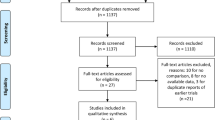Abstract
The five-year assessment of three randomised trials of short course (6, 9 or 18 months) chemotherapy for tuberculosis of the spine is reported. In Hong Kong patients were randomised to isoniazid plus rifampicin (HR) daily for 6 or 9 months, combined with radical surgical resection with bone grafting and streptomycin for 6 months for all patients. In Madras patients were randomised to chemotherapy with HR for 6 or 9 months, or 6 months HR chemotherapy combined with surgical resection. In Korea all patients were ambulatory and were randomised to different regimens of chemotherapy 6 or 9 months HR, or 9 or 18 months isoniazid plus ethambutol (EH) or isoniazid plus PAS (PH). In all centres the results of the 6- and 9-month regimens of HR were excellent and similar to the 18-month EH and PH regimens. The 9-month EH/PH regimens were clearly inferior. In Hong Kong excellent results were achieved by the radical resection. The disease was however less extensive than in Madras, where the results after surgery were no better than with ambulatory chemotherapy. Chemotherapy is the critical factor in the management of tuberculosis of the spine. Efforts should be concentrated on ensuring that appropriate regimens are given under adequate supervision.
Résumé
Nous présentons les résultats jusqu’à cinq ans de trois essais randomisés de chimiothérapie courte (6, 9 ou 18 mois) pour traiter la tuberculose de la colonne vértebrale. À Hong Kong les patients ont été répartis au hasard à recevoir isoniazid plus rifampicin (HR) tous les jours pendant 6 ou 9 mois, combiné avec une résection radicale de la lésion et l’insertion de greffes osseuses, plus streptomycin pendant 6 mois pour tous les patients. À Madras les patients ont été repartis au hasard à recevoir soit la chimiothérapie avec HR pendant 6 ou 9 mois soit la chirurgie radicale plus 6HR. À Korea tous les patients étaient ambulatoires et ils ont été repartis au hasard à recevoir les régimes de chimiothérapie differentes [soit HR pendant 6 ou 9 mois soit isoniazid plus ethambutol (EH) ou isoniazid plus PAS (PH) pendant 9 ou 18 mois]. Dans tous les centres les résultats des régimes de 6 et 9 mois étaient excellents et pareils aux régimes PH et EH de 18 mois, mais les régimens PH et EH de 9 mois étaient nettement inférieurs. À Hong Kong la chirurgie radicale a donné des résultats excellents mais la maladie était moins étendue que à Madras où les résultats n’étaient pas mielleurs que ceux obtenus avec la chimiothérapie ambulatoire. La chimiothérapie est un élément critique dans la traitement de la tuberculose de la colonne vertébrale. Il faut se concentrer pour donner les régimens pertinents sous la surveillance adéquate.
Similar content being viewed by others
Author information
Authors and Affiliations
Consortia
Additional information
Accepted: 21 August 1998
Rights and permissions
About this article
Cite this article
MRC Working Party on Tuberculosis of the Spine., Darbyshire, J. Five-year assessment of controlled trials of short-course chemotherapy regimens of 6, 9 or 18 months’ duration for spinal tuberculosis in patients ambulatory from the start or undergoing radical surgery . International Orthopaedics SICOT 23, 73–81 (1999). https://doi.org/10.1007/s002640050311
Issue Date:
DOI: https://doi.org/10.1007/s002640050311




